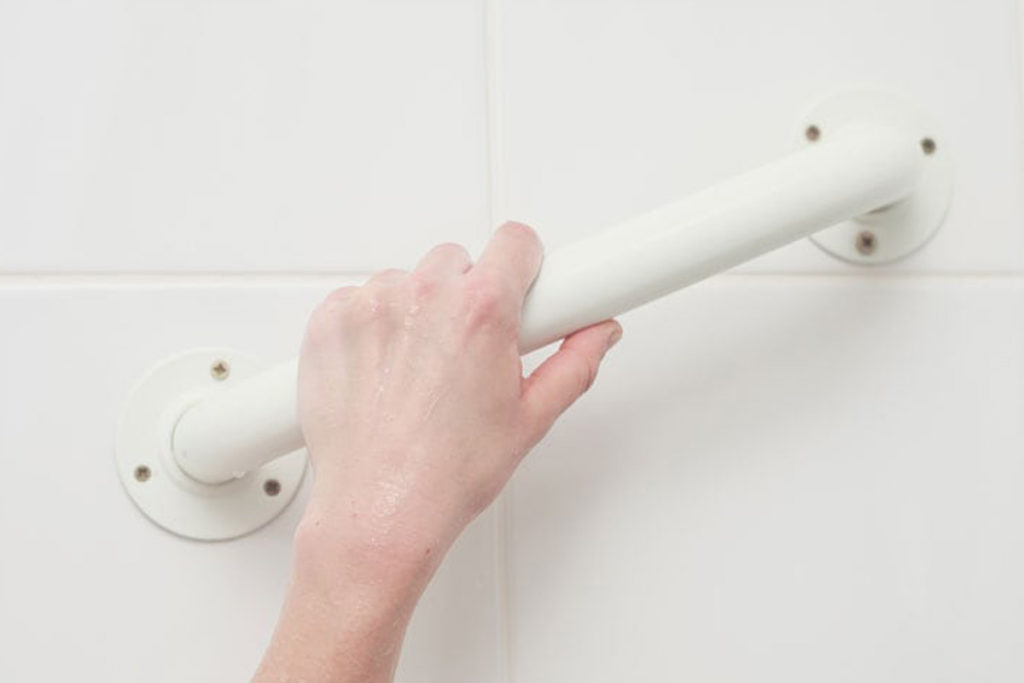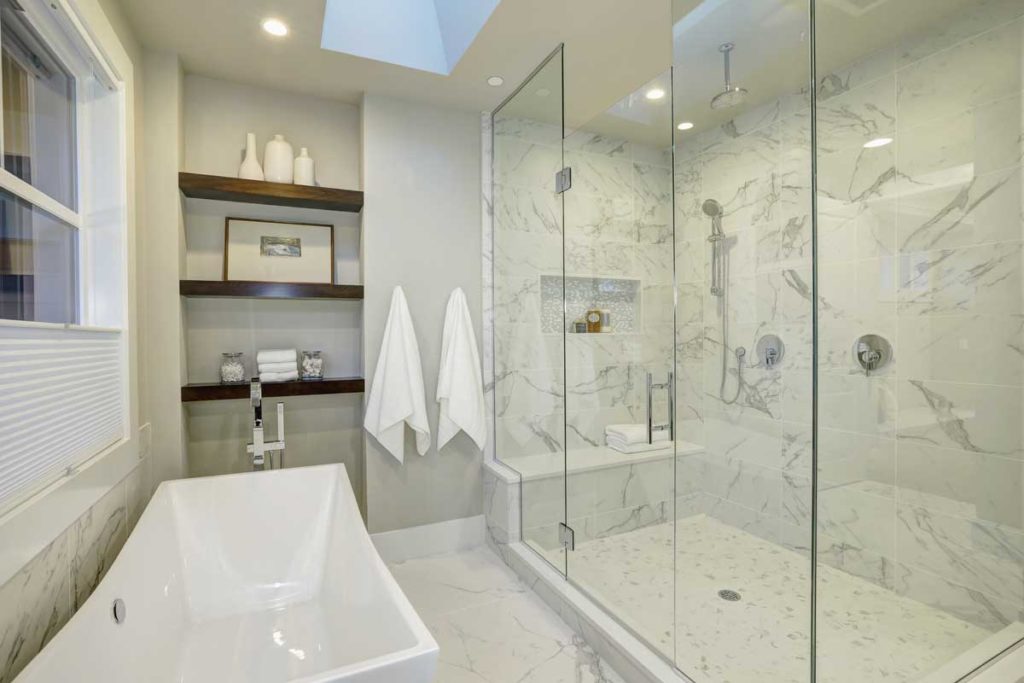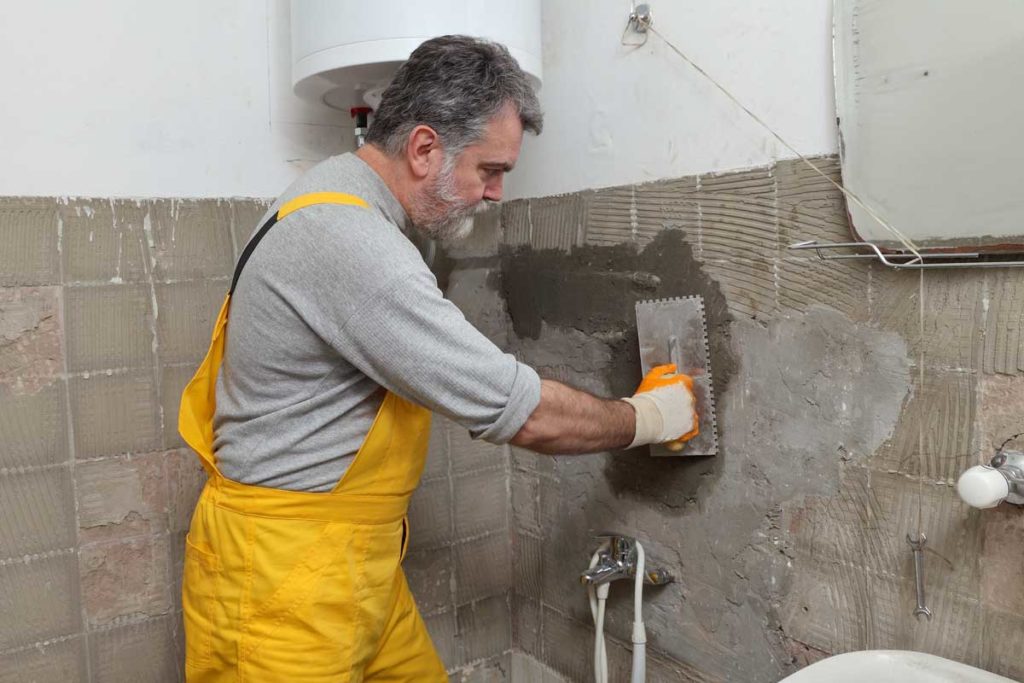For older adults, recovering from a fall can be difficult and sometimes impossible. More than 300,000 people are hospitalized each year from broken hips, and 95% of these fractures are the result of a fall, according to the Centers for Disease Control (CDC). Overall, 80% of falls happen in the bathroom, according to NewsUSA, quoting a National Institute on Aging statistic. Considering that a quarter of all Americans 65 and older fall each year, this means every senior stands a significant chance of experiencing a fall—and that the risks are even higher in the bathroom.
Call BathWraps to install your Walk-In Tub
Call Today 1-833-205-0050
Making Bathing Safe
Fortunately there’s a whole industry devoted to making bathing easier for seniors. And the products on offer don’t just make bathing safer: they also make it easier for people with disability issues—whether because of age or illness—to maintain their own hygiene despite their challenges. And some higher end products, like walk-in tubs, offer even more; they provide therapeutic treatments such as spa bathing, whirlpools, and water massage that can help those who suffer from arthritis, circulation problems, Parkinson’s disease, gout, neuropathy, or restless leg syndrome relieve the symptoms of their illnesses in the comfort and privacy of their own homes.
In this article we’ll look at the entire range of bathing accessibility products, with items that will fit any budget and any time frame you have to work in. Whether you just want to make your bathtub safer quickly or want to take advantage of all the therapeutic benefits of a walk-in tub, we’re here to guide you through your options.
As we look at the range of choices for making your bathroom more accessible, we’ll address three scenarios: first, we’ll address the person who wants to make quick and easy changes fast, second, the person who may have a little more time or money to spend, but is still looking to work quickly or on a budget, and third, the person who wants to find a complete solution, and is willing to pay a little more or take a little longer to get it.
Note, though, that the three situations aren’t mutually exclusive. If you’re concerned about bathroom safety, you may want to address fall risks first and then look for something more permanent later; if you’re already sold on a walk-in tub or similar product, you may still want to take some simpler steps while you shop around or wait for installation. The choice is yours, and there’s a world of products out there to choose from.

Products to Make Bathing Safer—Fast
If you’re a senior, or if you’re someone who cares for a senior, you may know that it’s rare for a catastrophic fall to happen without warning. Someone at risk of falls will likely know it or show signs of that risk before the worst happens. They may have trouble keeping their balance. They may have trouble getting up from a chair or couch. And they may have actually fallen a couple of times but avoided serious injury.
If this describes you or the person you care for, then the time to intervene is now, before a disabling or fatal fall. Fortunately, though, when it comes to bathing, there are quite a few products you can use to make the process safer, many of which can be put in place immediately without help from a professional. These products won’t make the bathtub 100% safe, and they may not make it easier for someone with mobility issues to bathe themselves, but because they’re inexpensive and easy to do—whether you do them yourself or hire a handyman—they make great first steps.
Many of these products are available at local DIY stores or medical supply retailers, and some smaller items may even be available at your local drugstore. Most of these items are also available online from Amazon and a few specialty retailers.
Types Of Accessible Bathing Accessories
Bath Tape
One of the least expensive safety products is also the easiest to install. Bath tape, (also known as tub and shower treads, anti-slip discs, or bath strips) simply add more friction to bathing surfaces, making it harder for a senior to slip and fall while in the bath or shower. They come in self-adhesive strips, disks, or rolls of tape. They can also be used in a variety of settings beyond the bathroom, including wooden floors, linoleum flooring, or any surface in the home that someone is likely to slip on.
Where to Buy—Hardware stores, online
Cost—less than $10, in most cases
Installation—DIY, handyman
Grab Bars
If you’ve ever been in an accessible public restroom, these bits of hardware may be familiar to you: they’re simply bars firmly attached to the wall (unlike towel racks, which aren’t designed to carry a person’s weight) that allow adults to keep themselves steady while entering or exiting the tub, or keep themselves upright if they begin to slip. And while they may seem like a simple solution, they are also highly effective. Don’t be put off by the industrial-style grab bars you may have seen, either. Several manufacturers offer grab bars that are just as sturdy but that are also tastefully designed. If you’re leery of hiring a handyman, or don’t like the idea of drilling holes in your bathroom tile, there are also self-adhesive versions and grab bars and handles that work via suction. It’s another easy modification that can pay off in vastly improved bathroom safety.
Where to Buy—Hardware stores, medical supply, bath supply stores, online
Cost—$25-$70, depending on the style, and plan on $30 or so per grab bar for installation.
Installation—DIY, handyman

Bath Chairs
You or the senior you care for may have no trouble climbing into a tub, especially if bath tape or grab bars have been installed. And it’s possible you’ve got a simple shower stall for bathing, so there’s no high threshold to get over. But even those who have no trouble getting into the bath can have issues remaining upright while taking a shower. A bath chair is a simple solution: these waterproof chairs (or stools) give someone a place to sit while they use a shower or hand shower to get clean. This simple solution comes with a variety of features, including arm rests, suction cups to keep them in place, seat backs (or not), and cushioned surfaces, so be sure to shop around before you buy to make sure you get a bath chair that suits your needs. The best part is that bath chairs are widely available, can come fully assembled, and can be easily installed by the user.
Where to Buy—Some drug stores, medical supply stores, online
Cost—$30-$60, depending on the features included
Installation—DIY
Transfer Benches
One step up from the bath chair is the transfer bench, which is designed for those who do have problems getting into a tub. These benches are built to hang over the edge of a bathtub, allowing someone using a wheelchair or a walker, or who may have difficulty clearing the threshold of their tub, to sit (or transfer themselves from another seat), bring their legs over the bathtub wall, and then slide into position. Just like bath chairs, these useful accessories come with a variety of features, including padded seats and suction cups for no-slip use, and just like bath chairs, several varieties can support over 350 pounds.
Where to Buy—Medical supply stores, online
Cost—$40-$70, depending on features
Installation—DIY






